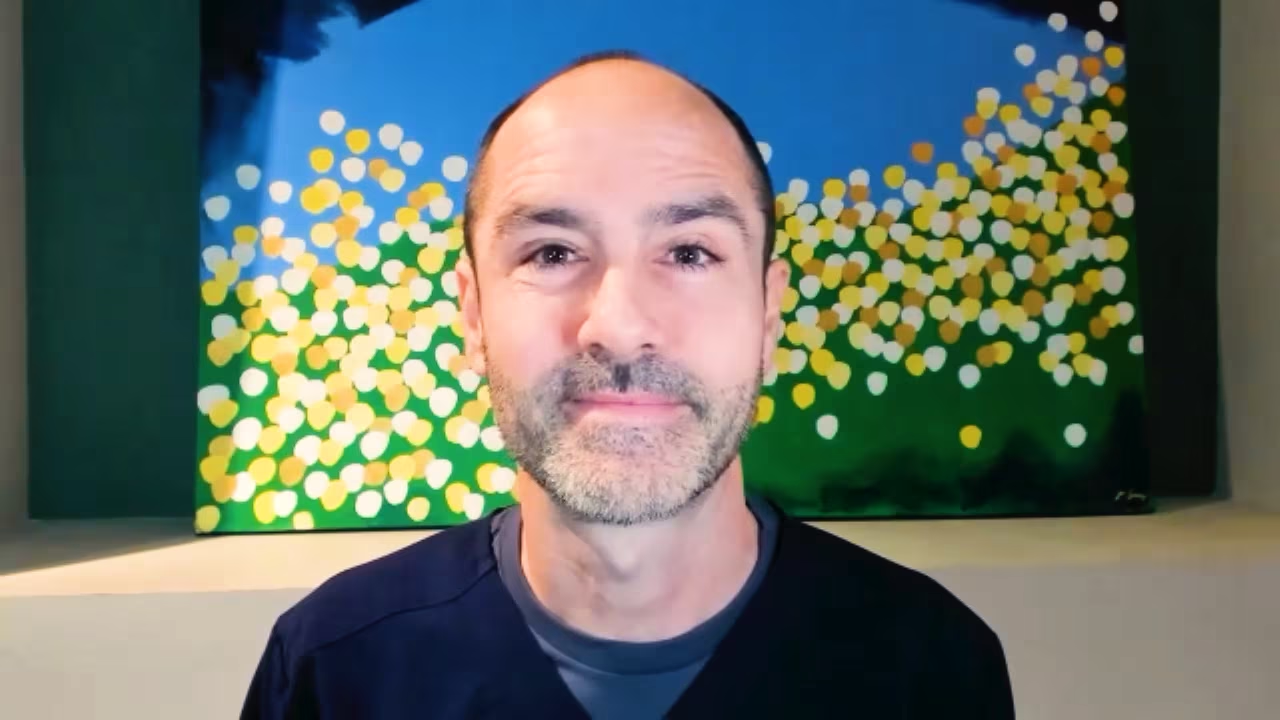New Perspectives in the Treatment of Alopecia Areata
Alopecia areata (AA) is a common dermatological disorder characterized by hair loss of the scalp and/or body, which is often resistant to treatment. It has a substantial impact on body image and self-esteem, resulting in greatly reduced quality of life.1 Its pathogenesis has not been fully elucidated, although increasing evidence suggests that it is a result of autoimmune attack against hair follicles which causes an inflammatory condition of the hair follicle.2 Recently, increased understanding of the role of the Janus kinase (JAK)-signal transducer and activator of transcription (STAT) pathway in the pathogenesis of alopecia areata has led to the use of JAK inhibitors in the treatment of the disease.3
In this expert interview, Dr Todd Schlesinger (Director, Dermatology and Laser Center of Charleston, Clinical Research Center of the Carolinas, Charleston, SC, USA) discusses the rationale for the use of JAK inhibitors in this treatment setting, describes the clinical evidence in support of their use and discusses future perspectives.
Q. What are the unmet needs in the treatment of alopecia areata?
Alopecia areata, an autoimmune disease, can be either localized or severe, often with a relapsing course. There is no standardized management approach. It is important because the condition is accompanied by psychological effects on patients due to the identity associated with hair. There can be severe effects on self-esteem and body image. For a long time, there were no promising new treatments in the pipeline, but that has changed with the discovery of the JAK-STAT pathway and its role in alopecia areata.
Q. What is the rationale for the use of JAK inhibitors in the treatment of patients with alopecia areata?
Alopecia areata is a complex inflammatory autoimmune disease in which there is an attack on the hair follicle during the growth phase, leading to hair loss. In a nutshell, the hair follicle antigens are no longer recognized as “self” by the immune system, triggering the inflammatory response. A number of anti-inflammatory or inflammation modifying treatments have been used such as corticosteroids, contact sensitization, ultraviolet light (delivered via light bulb or laser), minoxidil and cyclosporine, with varying and often unsatisfactory and inconsistent results. The JAK-STAT pathway of intracellular signalling is involved in the activation of gene transcription in the nucleus of the cell. Defects along this pathway can lead to increased interferon gamma and interleukin production, producing disease. Inhibiting this pathway disrupts the positive feedback loop between the follicle cells and cytotoxic CD8+ T cells. This can accelerate the hair follicle cells back into the growth phase, as was shown in mice back in 2014.4
Q. What clinical evidence to date supports the use of JAK inhibitors in this indication?
JAK inhibitors have shown promising results in phase 2 trials when used orally, but the data for topical use has not been strong.3,5 For tofacitinib, an oral JAK inhibitor, promising results were seen in terms of hair growth, as reported by Serdaroglu et al. in 2019, where just under half of the patients had a complete response as defined by a 90% reduction in the SALT score, a measure of hair loss called the Severity of Alopecia Tool.6 There have been a number of case reports and small series that also showed promising results.3,5 For example, in a late 2020 publication by Rota et al. involving tofacitinib treatment in 13 patients, all three patients with alopecia areata showed a response, while only half of those with alopecia universalis were successful.7 Deuterated ruxolitinib (CTP-543), an oral JAK1/2 inhibitor, was studied in a phase II trial at three doses. Data from the trial showed that 58% of patients achieved a greater than 50% relative reduction in their overall SALT score from baseline when given a 12mg daily dose, compared to 9% in the placebo group.8 Results became significant by Week 12. The 8mg dose showed 47% of patients achieving the same endpoint, while the results at 4mg were not statistically significant.
Q. Could you tell us a little about ritlecitinib and the current status of its development?
Pfizer announced the initiation of a phase IIb/III clinical trial for ritlecitinib, an oral JAK3 inhibitor, in January 2019 after promising results from a phase IIa study were released in 2018 which showed reduction in mean SALT scores of 33.6 on a 100-point scale. The adverse event profile was similar to that of other JAK inhibitors and included infection, gastrointestinal and skin/subcutaneous tissue categories without reactivation of herpes zoster.9 There is a long-term safety and efficacy study underway as well. Another phase IIa trial began in September 2020 (ClinicalTrials.gov Identifier: NCT04517864), which is a global study of ritlecitinib in adults aged 18–50 years with ≥25% scalp hair loss due to alopecia areata.
Q. What will be the likely future directions of development of JAK inhibitors in the treatment of patients with alopecia areata?
I believe we will continue to see new molecules developed with targets along the JAK/STAT and tyrosine kinase pathways, along with further development of platelet-rich plasma (PRP)-based treatments with both autologous and possibly synthesized PRP formulations. We will also hope to see further results emerge from the potential treatments currently under investigation. Recently Eli Lilly announced that baricitinib is the first JAK inhibitor to demonstrate hair regrowth in patients with alopecia areata in a phase III clinical trial.10 We also want to see if the relapse rate after discontinuation of treatment can be reduced, as that has remained an ongoing concern.
References
- Wang ECE, Christiano AM. The changing landscape of alopecia areata: The translational landscape. Adv Ther. 2017;34:1586–93
- Dainichi T, Kabashima K. Alopecia areata: What’s new in epidemiology, pathogenesis, diagnosis, and therapeutic options? J Dermatol Sci. 2017;86:3–12.
- Gilhar A, Keren A, Paus R. JAK inhibitors and alopecia areata. Lancet. 2019;393: 318–19.
- Divito SJ, Kupper TS. Inhibiting Janus kinases to treat alopecia areata. Nat Med. 2014 Sep;20:989–90.
- Triyangkulsri K , Suchonwanit P. Role of janus kinase inhibitors in the treatment of alopecia areata. Drug Des Devel Ther. 2018;12:2323–35.
- Serdaroğlu S, Engin B, Çelik U. Clinical experiences on alopecia areata treatment with tofacitinib: A study of 63 patients. Dermatol Ther. 2019;32:e12844.
- Rota DD, Emeksiz MAC, Erdogan FG, et al. Experience with oral tofacitinib in severe alopecia areata with different clinical responses. J Cosmet Dermatol. 2021;doi: 10.1111/jocd.13966.
- Cassella J, Hamilton C, von Hehn J, Braman V. P6:CTP-543, A JAK1/JAK2 Inhibitor, Achieves Primary Endpoint in Interim Analysis of Phase 2 Trial in Alopecia Areata. Presented at the 11th Annual World Congress for Hair Research (WCHR), Barcelona, Spain, 24–27 April 2019. Abstract P6:CTP-543.
- Pfizer. Pfizer Presents Positive Phase 2 Data In Alopecia Areata During Late-Breaker Session at the 27th European Academy of Dermatology and Venereology (EADV) Congress, 14 September 2018. Available at: www.pfizer.com/news/press-release/press-release-detail/pfizer_presents_positive_phase_2_data_in_alopecia_areata_during_late_breaker_session_at_the_27th_european_academy_of_dermatology_and_venereology_eadv_congress (accessed 10 March 2021).
- Eli Lilly and Company. Baricitinib is First JAK-Inhibitor to Demonstrate Hair Regrowth in Phase 3 Alopecia Areata (AA) Trial, 3 March 2021. Available at: https://investor.lilly.com/news-releases/news-release-details/baricitinib-first-jak-inhibitor-demonstrate-hair-regrowth-phase (accessed 10 March 2021).
Author profile: Dr Todd E. Schlesinger is the founder and director at the Dermatology and Laser Center of Charleston, Clinical Research Center of the Carolinas, Charleston, SC, USA. He is also a clinical research investigator and pharmaceutical consultant. Dr Schlesinger serves as a board member or editor for a variety of research-based journals and pharmaceutical companies. He is on the editorial board for the Journal of Clinical and Aesthetic Dermatology and the SkinMed Journal. Also, he is on the board of advisors for Remedly.com.
Playing an active role as an advocate for patients and for the betterment of medicine, he continues to contribute his time to many types of research and development. As a member of the Board of Trustees and immediate past president of the South Carolina Medical Association, he stays abreast of many medical issues in the dermatology field and continues to campaign for the medical community and lay public. Dr Schlesinger is past president of the Charleston County Medical Society and part of the American Academy of Dermatology, helping to iron out guidelines for dermatology. He is also deputy editor of Dialogues in Dermatology, a CME program. With the American Society for Laser Medicine and Surgery, Dr Schlesinger served on the Constitution and Bylaws Committee, helping to improve the organization of the society.
Disclosures: Todd Schlesinger has received grants/research funding from AbbVie, Aclaris, Arcutis Premier Research, Arcutis Biotherapeutics, Akros, Allergan, Astellas Pharma US Inc, AOBiome Therapeutics, Bioderma, Biofrontera, BioPharmx, Boehringer Ingerlheim, Bristol-Myers Squibb, Cara Therapeutics, Castle BioScience, Celgene, Centocor Ortho Biotech Inc, ChemoCentryx, Coherus Biosciences, Corrona, Dermavant, Dermira, DT Pharmacy & DT Collagen (Melasma), Eli Lilly, Galderma (Nestle), Genentech Inc, Janssen Pharmaceuticals Inc, Kinex, Kiniksa, Leo, Merz, Novartis, Pfizer, Regeneron, Sanofi, Sisaf, Tetra Derm Group LLC (Wound Healing) and Trevi; acted as a consultant for AbbVie (Honoraria), Aclaris (honoraria), Allergan (honoraria), Almirall, BioFrontera, Bristol-Meyers Squibb (honoraria), Castle Biosciences, Eli Lilly (fees), Evolus, Foundation for Research and Education in Dermatology (Fred), EPI Health (honoraria), Galderma (honoraria), Kintor, LEO Pharmaceuticals, Lilly (USA), MED Learning Group CME Program (August–October 2019), Merz (honoraria), MJH Associates ONCLive SCC Filming (Stacy Jaffe), Nextphase, Novartis (honoraria), Ortho Dermatologics, Pfizer, Prolacta Bioscience, Regeneron (fees), Sisaf, Sun Pharma, Suneve Medical, UCB and Verrica; participated on the speakers’ bureau for Aclaris, Almirall Dermira (honoraria), DUSA EPI Health Regeneron (honoraria), Regeneron/ Sanofi Aventis, Sanofi, Genzyme, Sun Pharma (Honoraria) and Suneva (honoraria) and has been on the advisory board for Allergan, Almirall (honoraria), Amgen, Bioderma (honoraria), Biofrontera AG (honoraria), Celgene, Greenway Therapeutix (no compensation received), Remedly Inc (stock options) and Suneva Medical Inc (honoraria).
Support: Commissioned, edited and supported by Touch Medical Media. Writing assistance was provided by Katrina Mountfort from Touch Medical Media.






